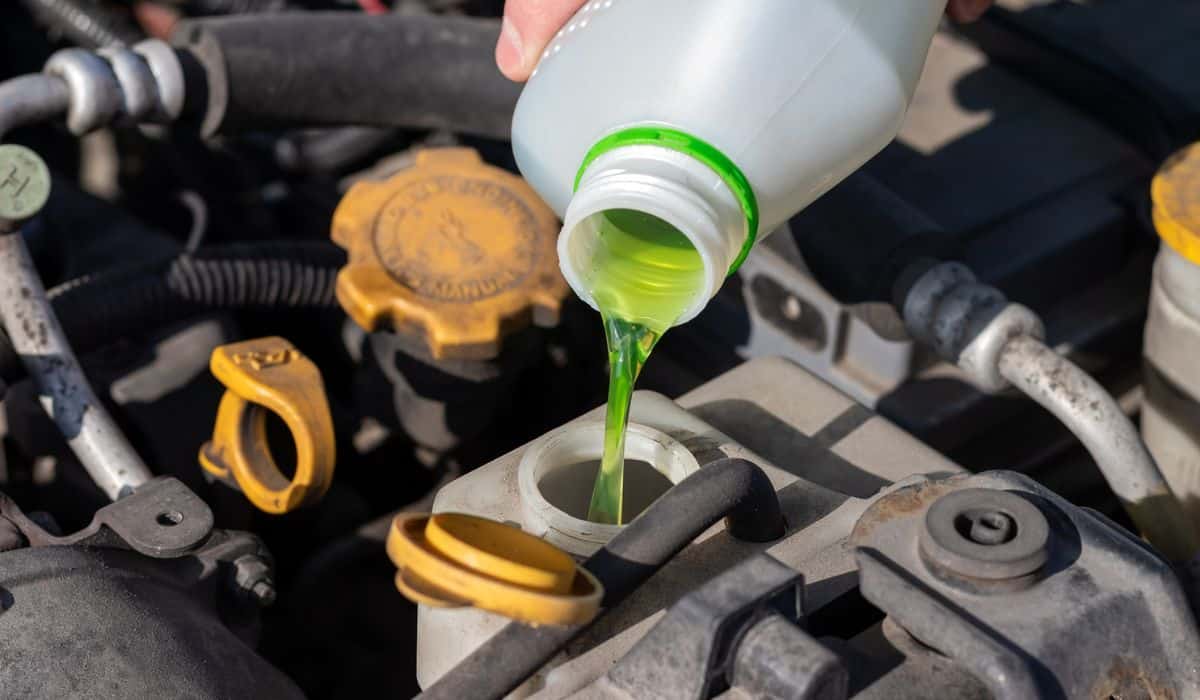Can I Mix Antifreeze With Water? How-to Guide and Tips
Antifreeze is crucial to keep your car running smoothly and preventing damage to the engine. You might have heard about recommendations for mixing water and antifreeze. But is doing this safe, and which ratio of water to antifreeze is best?
Yes, you can combine certain antifreeze brands with distilled water. A 50/50 mixture of water to antifreeze is generally recommended. Some brands come premixed, allowing you to top off your vehicle when running low. Always follow the manufacturer’s instructions and safety guidelines.
Don’t worry if you’re running low on antifreeze and unsure how to proceed. Although there’s a lot to consider, the process is straightforward and beginner friendly. Let’s take a deeper look at everything you need to know.
Can You Mix Antifreeze With Water?

Yes, you can mix certain antifreeze brands with distilled water without any issues, as long as you follow the best practices.
Water is one of the best liquids for cooling, but it can cause corrosion. Antifreeze is excellent in extreme conditions because it has a higher boiling and lower freezing point than water. That said, a combination of antifreeze and water is typically recommended. This is because antifreeze isn’t great at cooling off an engine on its own.
You can find antifreeze brands that come diluted with water, allowing you to add more when needed — but they can be more expensive.
Alternatively, you can purchase mixtures that require you to add water. These products provide more flexibility and allow you to adjust the ratio of water to antifreeze for any given circumstance.
What’s the Best Water to Antifreeze Ratio?
So, you purchased an antifreeze brand that requires adding water, but what ratio should you use?
Generally, a 50/50 mixture of distilled water and antifreeze is recommended for almost all vehicles. This mixture is an excellent place to start and works well for most conditions, but be sure to check your owner’s manual for the most accurate information.
The 50/50 mixture provides protection against freezing temperatures, absorbs heat from the engine, and prevents rust. However, your location, climate, and temperature might affect the optimal mixture.
For instance, you might want a 70/30 mixture of antifreeze to water if you live in an area where temperatures drop below 32 F for extended periods. A 70/30 mix can be better suited for places like Alaska, North Dakota, and parts of Northern Europe, as it will keep the coolant from freezing.
Note that you should always follow the manufacturer’s instructions and owner’s manual for the most accurate information. Some brands require distilled water, as tap water can have minerals and deposits that can negatively impact a vehicle’s cooling system.
Is Water Mixed With Antifreeze Dangerous?
Yes, in some situations, water mixed with antifreeze can negatively impact humans, animals, vehicles, and the environment.
Antifreeze, even when diluted, is highly toxic to humans and animals. The mixture can be fatal when ingested and irritate the skin and eyes. Be sure to wear protective gear when handling antifreeze and call 911 or poison control immediately if swallowed.
Antifreeze can also harm the environment if it isn’t recycled correctly. Never dump antifreeze or diluted mixtures down your drain, as they can enter the waterways and negatively impact your pipes.
Lastly, using tap water and antifreeze mixtures can harm your vehicle and isn’t recommended. Tap water contains minerals like calcium and magnesium, which can build up inside the radiator and cause premature wear. Instead, follow all of the manufacturer’s instructions and use diluted water.
Does Antifreeze Need to Be Diluted?
Yes, antifreeze needs to be diluted with distilled water. Some brands, like Valvoline Prediluted 50/50 Antifreeze (on Amazon), come premixed with water, allowing you to quickly top off your system when you’re running low. However, these brands are typically more expensive and less flexible.
Other products require adding water but can be more affordable and versatile. Brands like Zerex Original Antifreeze (on Amazon) can be helpful if you live in colder climates and need more control over your coolant.
Either way, make sure you follow the manufacturer’s instructions before adding any antifreeze or coolant to your vehicle.
Tips for Adding Antifreeze to Your Car Safely

All vehicles need antifreeze to run smoothly and safely. Unfortunately, the chemicals inside antifreeze can be dangerous when misused. Let’s take a look at some tips to help you add coolant to your car safely and efficiently.
- First, always follow the manufacturer’s instructions and safety guidelines. Otherwise, you risk injury or damage to your vehicle. Don’t hesitate to seek professional assistance if you feel out of your comfort zone.
- Perform vehicle maintenance on flat, hard, and even surfaces. Do not change your antifreeze on a hill or incline.
- Turn off your vehicle and give it time to cool down before you add any fluids. Do not begin until the engine no longer feels warm to the touch.
- Always wear safety equipment. Googles, gloves, and face masks are a must. Contact emergency services or poison control if you spill or ingest any antifreeze.
- Do not wear loose clothing. Take off any long shirts, jackets, watches, or jewelry. Roll up your sleeves if necessary.
- Ensure the parking brake is engaged, especially if you plan to jack up the vehicle to drain leftover antifreeze.
- Utilize wheel chocks once the car is raised. Place the wheel chocks behind the rear wheels to prevent the vehicle from moving.
- Coolant is incredibly toxic for humans, animals, and the environment. Do not ingest antifreeze or diluted mixtures. Call poison control or 911 immediately if an accident occurs.
- Make sure you properly dispose of and recycle any leftover antifreeze. You can find a recycling center in your area on Earth911 or consult your local auto shop for additional assistance.
